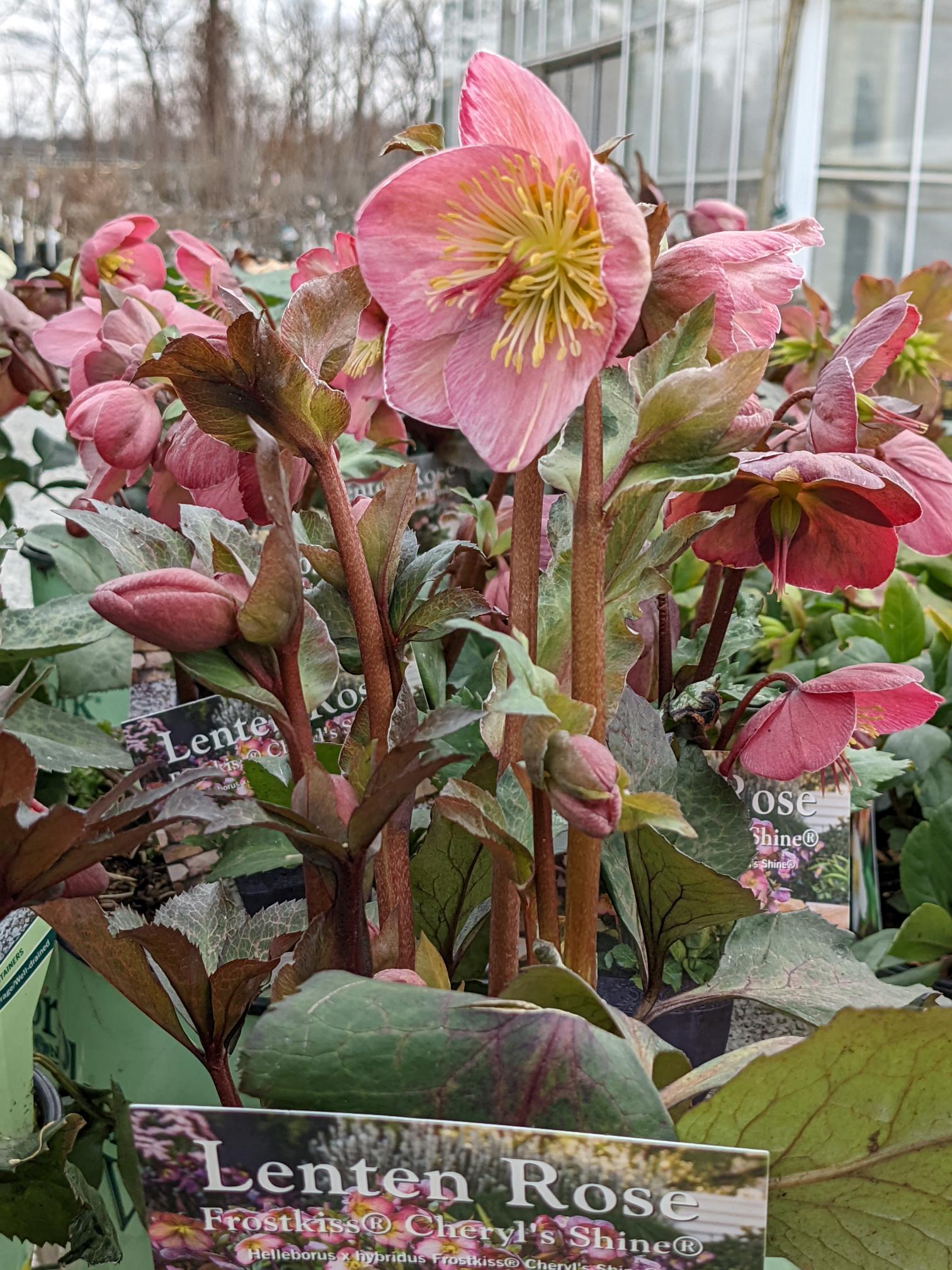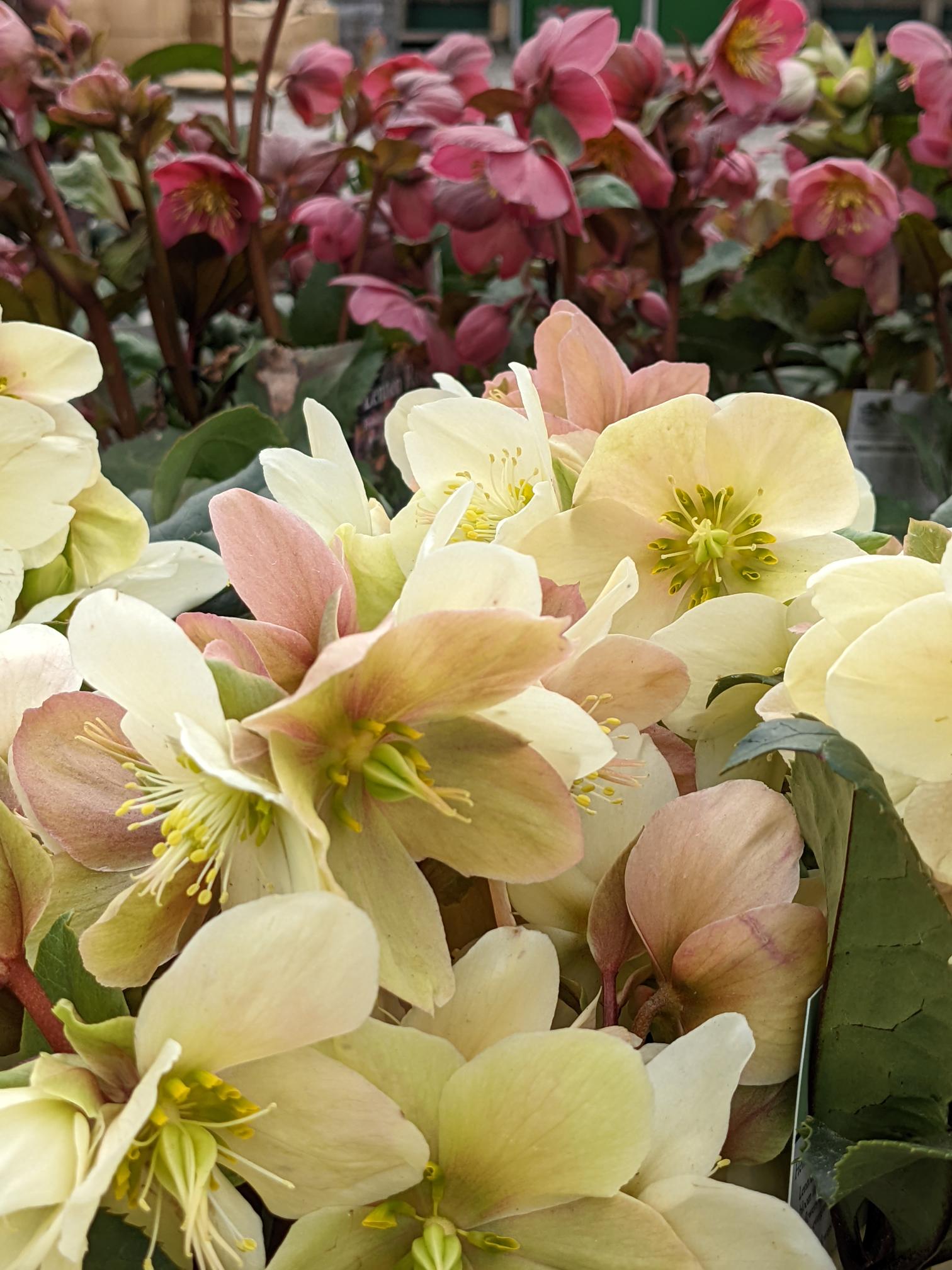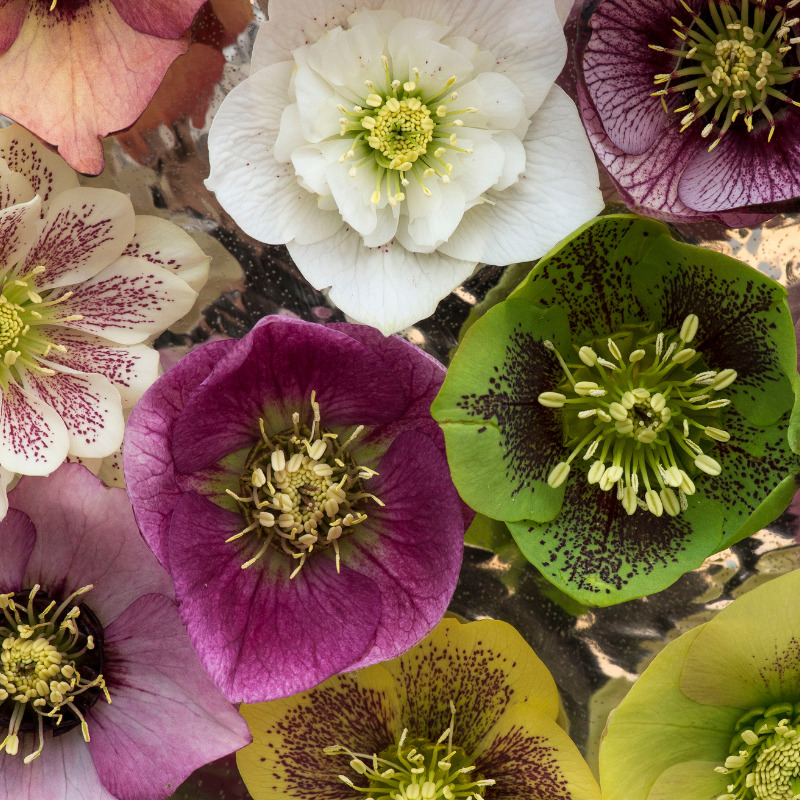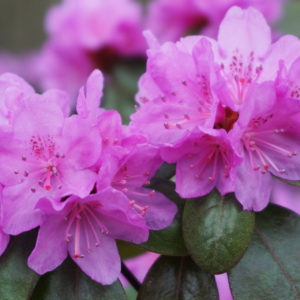Come late winter we New England gardeners start to feel what can only be described as “gardening fever” in that we have experienced several months of nothing growing outside, and with the lengthening days we are now itching to get started growing things, or at least seeing signs that spring is not far away.
There are some plants that brave the cold of February and March and provide food for the few early pollinators that are about. Snowdrops and crocus are among the earliest bulbs and trees such as witch hazel and cornelian cherry brighten our landscapes. Perennials tend to get off to a slower start, but hellebores will also brave the remains of winter to provide colorful blooms.

There are around 20 species of hellebores, mainly native to eastern Europe and western Asia, but only three are regularly found for sale in New England. They are Helleborus niger (Christmas rose), Helleborus orientalis (Lenten rose) and its hybrids and Helleborus foetidus (Stinking hellebore).
While you might not be familiar with hellebores here are several reasons to consider giving them a home in your yard.
They are evergreen. They have palmate glossy green leaves, and some of them also have attractive contrasting veining, which means their visual interest extends throughout the year. As such they do not need much maintenance. At most the older leaves will become ragged and are best removed late winter to make room for the flowers and new leaf growth. The plants are self-supporting, growing between 12-24” tall depending on variety and complement other foliage plants well.
Established plants will produce plenty of flowers. They range in color from pure white and green through various shades of pink, red and burgundy. Each flower is cup-shaped and between 1-2” in diameter. Species’ flowers tend to hang down so as to shed snow easier, but the hybrids often have more upright facing flowers, so their beauty can be better appreciated. Flowers can be either single or double, just one color or speckled or two-tone.
Flowers last for a long time. What appear to be petals are in fact often sepals (the outer protective coat of flower buds) and these stay intact once the flower is pollinated, slowly fading or changing in color, but maintaining the appearance of still flowering while seed is being set.
If left to produce seed, it is not uncommon to see seedlings germinate. These can be allowed to mature, but it should be noted that they may not necessarily resemble their parent in flower color. For this reason, it is best to buy hellebores when flowering, as there can be some slight variation in coloration even among the same variety.
They are drought tolerant once established. They do best in dappled light, which means they are ideally suited for shade gardens, particularly under deciduous trees, which give them the protection they need from summer sun. They appreciate humus-rich soil but are not overly fussy or demanding.
They are hardy, able to grow in Zones 4 through 9. While a particularly cold snap will cause flowers to droop, they will soon recover once temperatures warm.
They are deer and rabbit resistant. This is a big plus as they are at their best at a time of year when there is little natural vegetation available to herbivores. They belong to the Ranunculaceae plant family, and like buttercups for which the family is named, they are not palatable to deer and rabbits.

If you are tempted to add some of these early-season beauties to your yard, they can give color from winter’s end through spring.
Christmas rose (H. niger) is so called because it naturally flowers in December. While it might not flower that early here in Massachusetts, it is the first of the hellebore species to flower and needs cold winters to do well as it is hardy to Zone 3. Flowers are pure white set against fresh green foliage. Here they are most likely to be sold flowering as Christmas plants in December. While these hellebores will have been raised in a greenhouse, they can be kept indoors until they can be hardened off and planted outside. Thereafter they will bloom in late winter.
Stinking hellebore (H. foetidus) gets its name from the unpleasant smell that can come from bruising its leaves and flowers. It comes into bloom after the Christmas rose, around February but before the Lenten rose. This is a taller hellebore with flowers branching off individual stems. The flowers are pale green and delicately edged with burgundy and the foliage has a fine lacey appearance compared to the sturdier leaves of other hellebores. This species is extremely drought tolerant once established.
Lenten rose (H. orientalis or H. x hybridus) is the hellebore most commonly seen in garden centers. It blooms in early spring and offers the most variation in flower color, size and markings. Some cultivars also have the bonus of contrasting veining on their leaves, so that visual interest continues long after the flowers are over. They also have the benefit of being the easiest and quickest to grow, as hellebores are generally not fast growers with seedlings taking around three years to bloom.
Sources:
Hellebores – An Amazing Winter and Early Spring Display (psu.edu)
Hellebores: Flowers from Winter into Spring – Brooklyn Botanic Garden (bbg.org)
Hellebore: Captivating Winter Blooms for Your Garden (gardenia.net)
Hellebores – Garden.org








